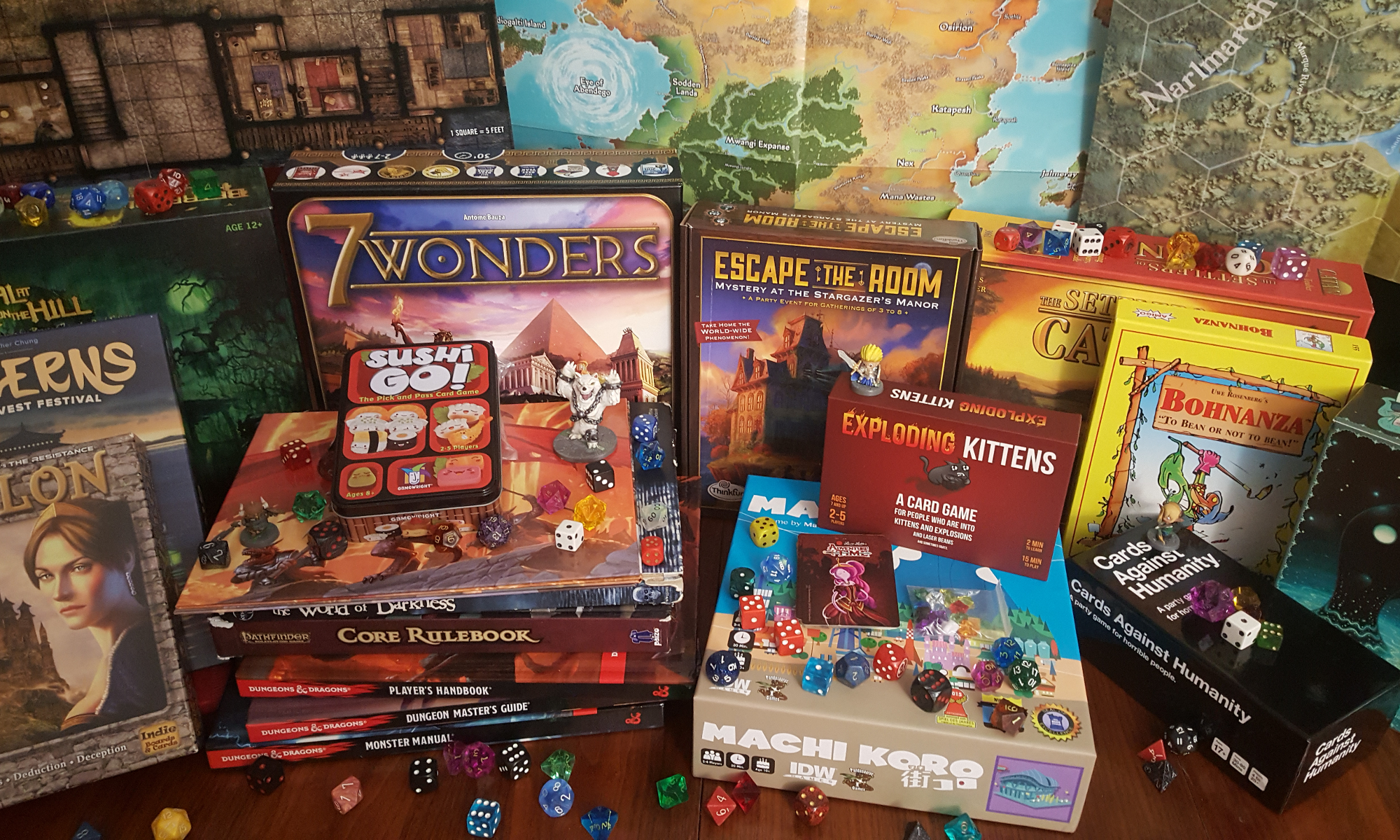On today’s episode of Save Vs. Rant, we delve into the theory of fun itself. What makes things fun? How can we understand fun on a deeper level? Why are two completely different things both enjoyable even though they may share virtually nothing in common? Find out, when we discuss Eight Flavors of Fun!
Game designer Marc LeBlanc previously had a website at www.8kindsoffun.com, which seems to be down at the time of this writing. This is a shame because it had a lot of good information. You can still find a snapshot of it on the Internet Archive.
8 flavors of fun! 8 ways of enjoying something! Let’s use a single example to go through all 8 in detail. As people who work in the Casino and Gambling Industry, Jeremy and I are intimately familiar with a game that can potentially have all of them (although not necessarily all at once): poker.
When we talk about poker, we’re talking about a single game that can be played many different ways in many different contexts. Even if we limit ourselves exclusively to one poker variant (Texas Hold ‘Em, for example) there are still numerous settings wherein a poker game may be played, and these all have a bearing on why the game of poker is “fun.”
Sensation is achieved through the aesthetics and atmosphere of the game. If the game is played in a Casino or Poker Club, the atmosphere will typically be inviting and bright, yet neutral. Something that doesn’t overstimulate the players, but at the same time matches their expectation for a poker game. Other settings, however, may turn this on their head. The classic image of card sharks in the back of a seedy bar cloistered under a single bright light in a smoky dingy room also come to mind. Players in home games not meant to be played for serious money could use pennies, nickels quarters and dollars, but many amateur poker players buy realistic casino chips and casino-quality cards for their poker meets. Aesthetics provide the sensory pleasure of the game.
Fantasy – the make-believe aspect of the game – may not be as readily apparent with poker, but many at-home games are played for the thrill of pretending to be the next Johnny Moss or Joe McKeehen, even though you know, deep down, that the most you’ll probably ever be is the guy who walks out of the casino up a couple hundred bucks for a night of intense play.
Narrative, likewise, isn’t quite so obvious a thing, but whether you’re watching poker tournaments on television or simply have friends who are poker players, I’ve never in my life met a serious poker player who didn’t come with a load of incredible stories and tall tales. Even watching a poker game from afar, one cannot help but be mesmerized by the characters one sees at the tables and speculate regarding their backgrounds and personalities (and, possibly, learn them if you spend enough time watching and listening).
Challenge comes in the form of both learning to read the tells of other players as well as gaining mastery over the odds. Being in a position to watch literally thousands of hands of poker unfold lets you see some amazing moments where players overcame seemingly impossible odds or suffered a truly humiliating bad beat. Poker is a game that, to a complete outsider, looks almost entirely random, but mastery comes, and seeing it play out is both subtle and alarming in its intensity.
Fellowship is uncommon in the casino industry – most players are there to win – but pretending that even among strangers who play poker there isn’t the camaraderie of a shared hobby would be ignorant at best. Beyond that, many people play poker with their friends as a way of bonding. You can learn a lot about someone by playing any game with them, and a game like poker – with a deceptively simple framework over a complex social and mathematical game – is especially telling.
Discovery is, again, largely based on who you play with, how you play and what you’re willing to put into the game. Poker is a heavily analyzed game, and while for new players there’s a potentially fascinating world of possibility out there, discovering something truly new about the math or strategy would be the work of a prodigy. Having said that, new people, new venues and new variations on how the game is and can be played all exist, and for the dedicated player, there are ample opportunities to expand their horizons within the game.
Expression comes in bringing your particular style to the poker table. Again, a visit to a poker room will turn up all sorts of characters, choosing to display themselves in their own style. Some of them peacock and show off their flair while others dress conservatively. Still others wear the dark glasses, hoods and visor hats of the pokerface ensemble while others dress to the nines. Players present themselves as they please, flaunting vast disorganized piles of chips or carefully stacking and cataloging their bankroll.
Finally, Submission is arguably the single biggest part of being a poker player (or playing nearly any casino game for that matter). Playing dozens upon dozens – or even hundreds! – of consecutive hands of poker for hours at a time is a huge part of playing poker seriously. For many players, playing hand after hand of poker all through the night is a great night out even if they don’t win.
Even though poker is not an ideal example for every category of fun, each of these elements of fun can be present in the game. It provides an excellent example of how a game, played different ways and in different contexts, can be enjoyable for different reasons.
Knowing what it is that makes games fun can help you build a better understanding of what you and your gaming group or groups enjoy about games, which will in turn deepen your appreciation for them and give you a framework for determining what games are the best fit for your styles.

